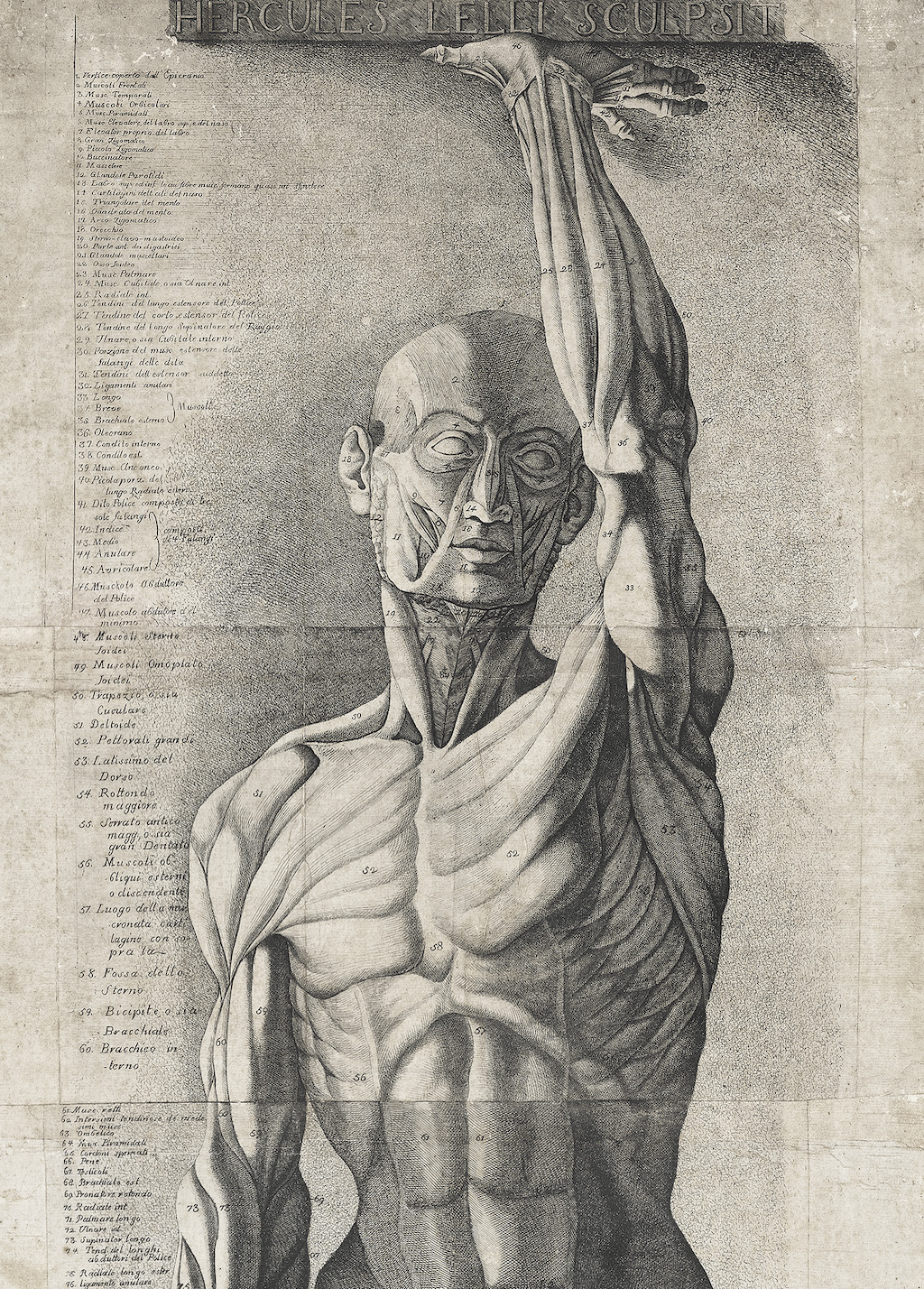Week 4: Medicine + Technology + Art
The intersection between medicine and art isn’t an idea I’ve come across often, but this week’s lectures and readings have provided me with a new viewpoint on the ubiquity of art. Like professor Vesna, I discovered an unlikely creative inspiration from studying the human body. In my first-ever anatomy class, I realized that the material I was learning extended to my art and it helped to considerably improve my skills with proportions. Because of this experience, the topic that piqued my interest during this week's lectures was the history behind anatomical art.
Throughout the Renaissance period, anatomists and artists frequently worked together to create anatomical illustrations; it was necessary for an artist to be nearby when dissecting or studying cadavers because of their quickly-decomposing nature (Kornell). Some anatomists even became artists themselves to further bridge the gap between representation of the body and scientific knowledge of the body (Kornell). Contrastingly, contemporary artists create 3D computer-generated images from scan technology like MRI accessible to the lay viewer, developing a medium for visual communication between clinicians and their patients (Morris-Kay et al.).
 |
| Life-size anatomical figure, seen from the front (one of a set of three) (detail), 1780, Antonio Cattani. Getty Research Institute, |
Another artist that was mentioned in our lectures for this week was ORLAN. She is described as a provocateur for her famous piece “The Reincarnation of Saint ORLAN” in which she undergoes nine plastic surgeries, all videotaped, to create a spectacle of the “celebration of the body and a celebration of its destruction” (Biggs). In essence, this piece was a statement against the beauty standards that constrain women. I believe ORLAN’s use of medicinal technology in her art is brilliant in this regard, and I enjoy seeing the feminist perspective captured in such a provocative way.
 |
ORLAN, “Opérations chirurgicales performances” (1993) |
In the same exhibition, ORLAN recreates Bernini’s Ecstasy of Saint Teresa, urging onlookers to view women not through the virgin/whore dichotomy (a trope often displayed in famous artwork) but as complex humans (Cascone). In this way, ORLAN is juxtaposing the common stereotypes behind plastic surgery with her own empowering message. Learning about ORLAN's shocking display of "body art" elicited a negative reaction from me at first, but upon researching further about the stance she's putting forth in these pieces, I found myself wanting to learn more and more about it.
 |
| ORLAN, “Etude documentaire, Le Drapé, Le Baroque Palazzo Grassi, Venise #04, 1979 |
Sources:
Biggs, Emilie. “The Reincarnation of Saint ORLAN.” Gadfly Gadfly, 12 June 2018, https://www.thegadflymagazine.org/home-1/the-reincarnation-of-saint-orlan.
Cascone, Sarah. “Provocateur Orlan Reflects on How She Went from Being Reviled for Her Body Art to Claiming Her Place in the Art World.” Artnet News, Artnet News, 14 Sept. 2019, https://news.artnet.com/art-world/orlan-interview-1650289.
Cattani, Antonio, Edell, Dean, and Lelli, Ercole. [Anatomical Figure]. (1780). Print.
Kornell, Monique. “It Takes Artists and Scientists to Understand the Human Body.” Getty, 8 Feb. 2022, https://www.getty.edu/news/it-takes-artists-and-scientists-to-understand-the-human-body/.
Micchelli, Thomas. “The Fearless Faces of a Feminist Firebrand.” Hyperallergic, 5 Nov. 2019, https://hyperallergic.com/526012/saint-orlan-at-ceysson-benetiere/.
Morriss-Kay, Gillian, and John Fraher. “The art of anatomy.” Journal of anatomy vol. 216,2 (2010): 157. doi:10.1111/j.1469-7580.2009.01194.x
ORLAN. “Etude documentaire, Le Drapé, Le Baroque Palazzo Grassi, Venise #04, 1979” (2014), Galerie Ceysson & Bénétière\. Prestige print.
ORLAN. “Opérations-Chirurgicales-Performances” HISTORICAL STRIPTEASE. 1993.
Hi Anna -
ReplyDeleteI liked how you described your experience with discovering the human body as a form of art in your anatomy class. Personally, I discovered the human body as an art form at an exhibition that showcased the anatomy of bodies at a museum as a child. I also liked how you included the art piece of "The Reincarnation of Saint ORLAN." This serves as a great example of how society's standards of the body image of women are often damaging. I really enjoyed your post for this week!
-Julia